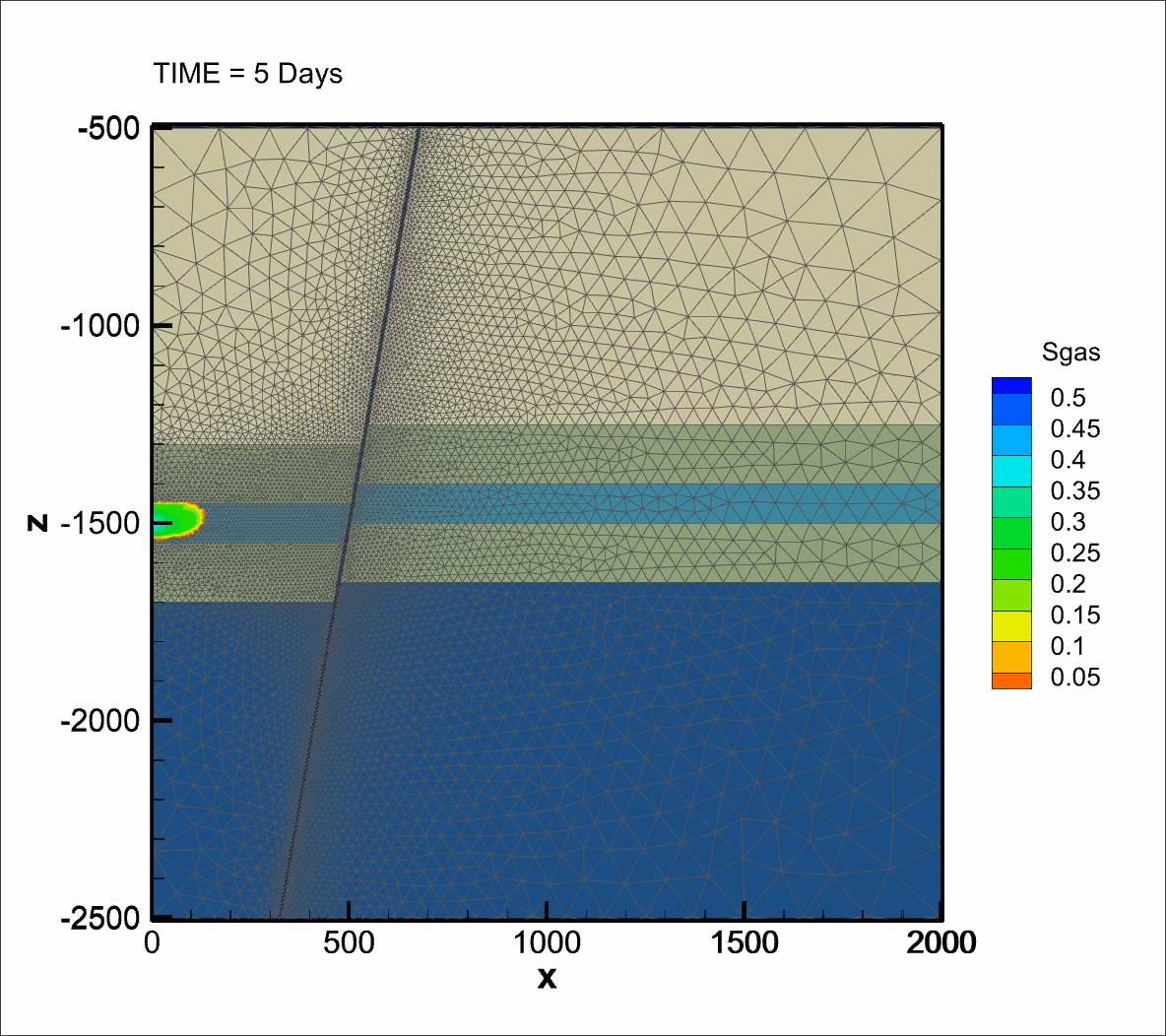Participated Projects
- Natural Gas Hydrate FWP - Development, Testing, and Validation of the DEM Based Particle Transport Code (NETL, DOE-FECM)
PIs: Dr. George Moridis, Dr. Thomas Blasingame - Evaluation of Feasibility and Determination of Conditions and Practices for Maximization of Gas Storage and Early Recovery of Residual Hydrocarbon from Depleted Gas Reservoirs (Crisman Institute, TAMU)
PIs: Dr. George Moridis, Dr. Thomas Blasingame - Investigation of Coupled Processes in Argillite Rock (LBNL, DOE -NE)
PIs: Dr. Jonny Rutqvist - Cyclic Injection for Commercial Seismic-Safe Geologic H2 Production (CyclicGeoH2) (LBNL, DOE-ARPA-E)
PIs: Dr. Mengsu Hu, Dr. Jonny Rutqvist
Geothermal Energy
Enhanced geothermal systems (EGS), or human-made geothermal energy, is the next frontier for renewable energy deployment. In an EGS, fluid is injected deep underground under carefully controlled conditions to create new fractures and cause pre-existing fractures to re-open, creating permeability.
Increased permeability allows fluid to circulate throughout the more fractured hot rock, and the fluid becomes hot as it circulates. I am working on simulating coupled thermal-hydraulic-mechanical-chemical (THMC) processes in EGS.
My current work includes:
- Embedded Discrete Fractures Model (EDFM) for field scale EGS simulation
- Simulating the co-production of geothermal energy and others dissolved solids, such as lithium
- Mineral precipitation during production of geothermal energy, from fracture scale to field scale

Advanced Compositional Simulation
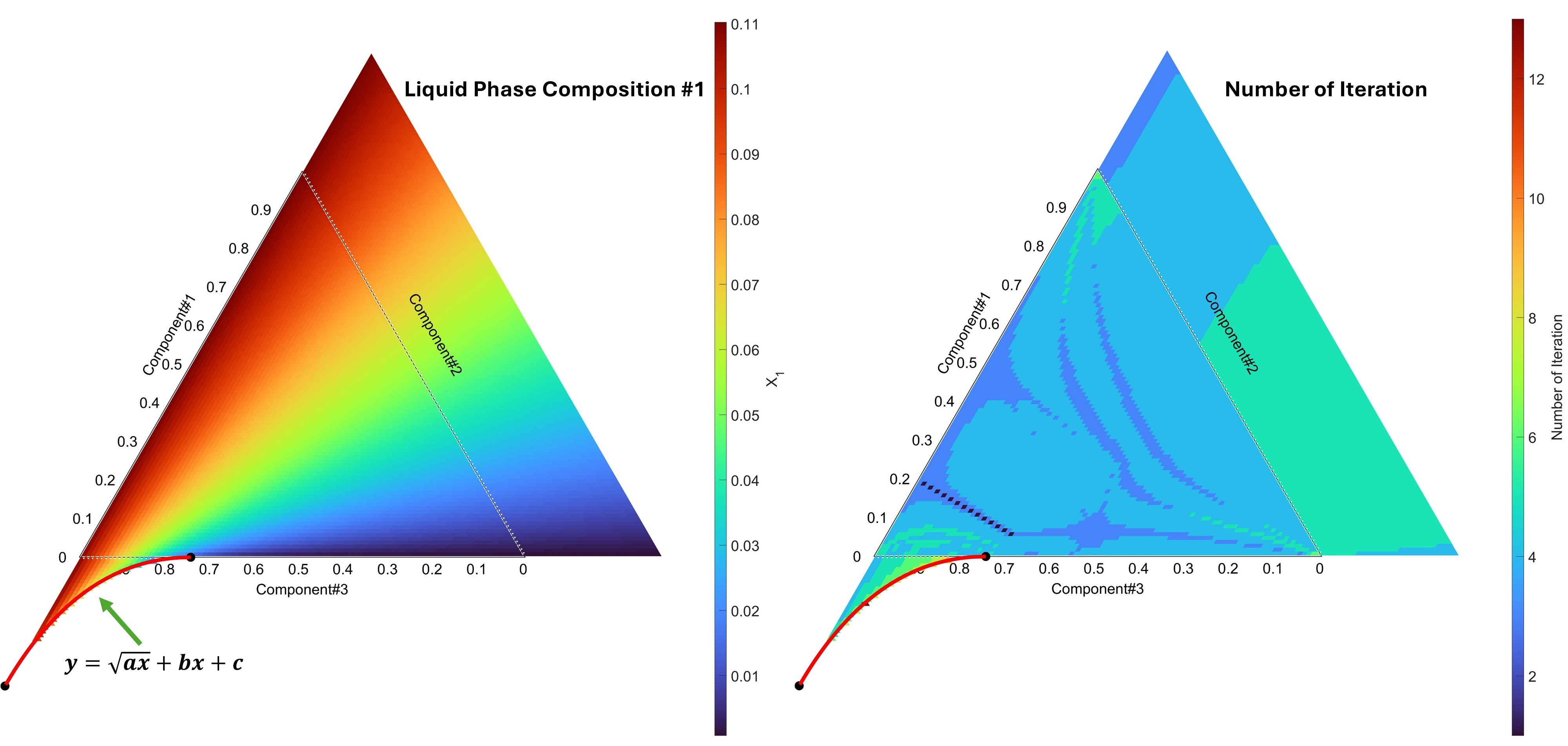
I am working on building a compositional simulator that can improve ability to predict oil recoveries and make robust and rapid simulations for highly compositional processes.
My current work includes:
- Improving the robustness of flash calculations, either (1) satisfying the equal-fugacity and material-balance constraints or (2) minimizing the mixture Gibbs free energy function
- Enhancing efficiency of algorithm of solving Rachford-Rick Equation
- Reduced equations approach to flash calculations
High-performance Computing
Parallel computing involves dividing a problem into smaller parts that can be solved concurrently. I have developed high-performance simulators using both MPI and OpenMP with FORTRAN as the base programming language.
I am also passionate about optimizing algorithms and conducting performance analyses. Leveraging advanced high-performance computing clusters, it becomes feasible to simulate coupled problems with finer meshes and more complex physical processes.
For example, tracking the trajectories of millions of particles is computationally intensive.
My work includes:
- Parallelizing TOUGH+RealGasBrine using the METIS and PETSc libraries (MPI)
- Developing and parallelizing a Particles Transport code (over 10,000 lines)
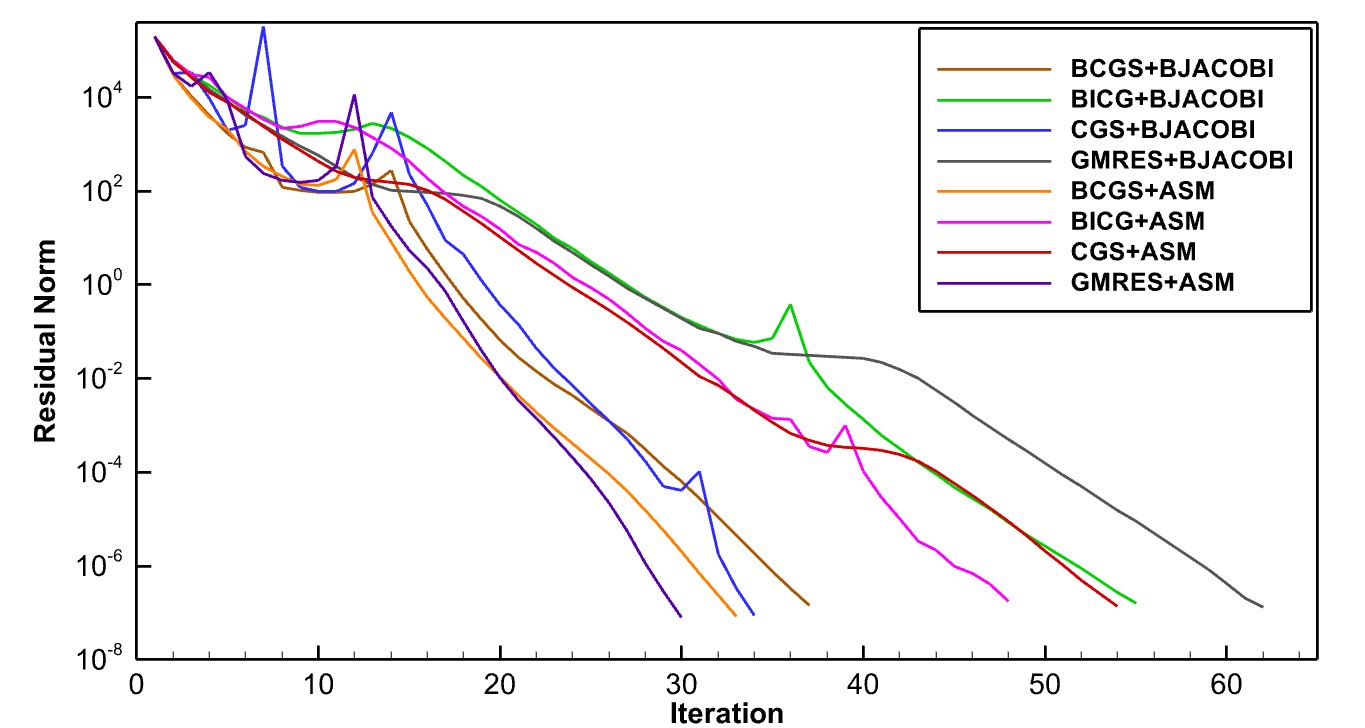
Particle Transport in Porous Media
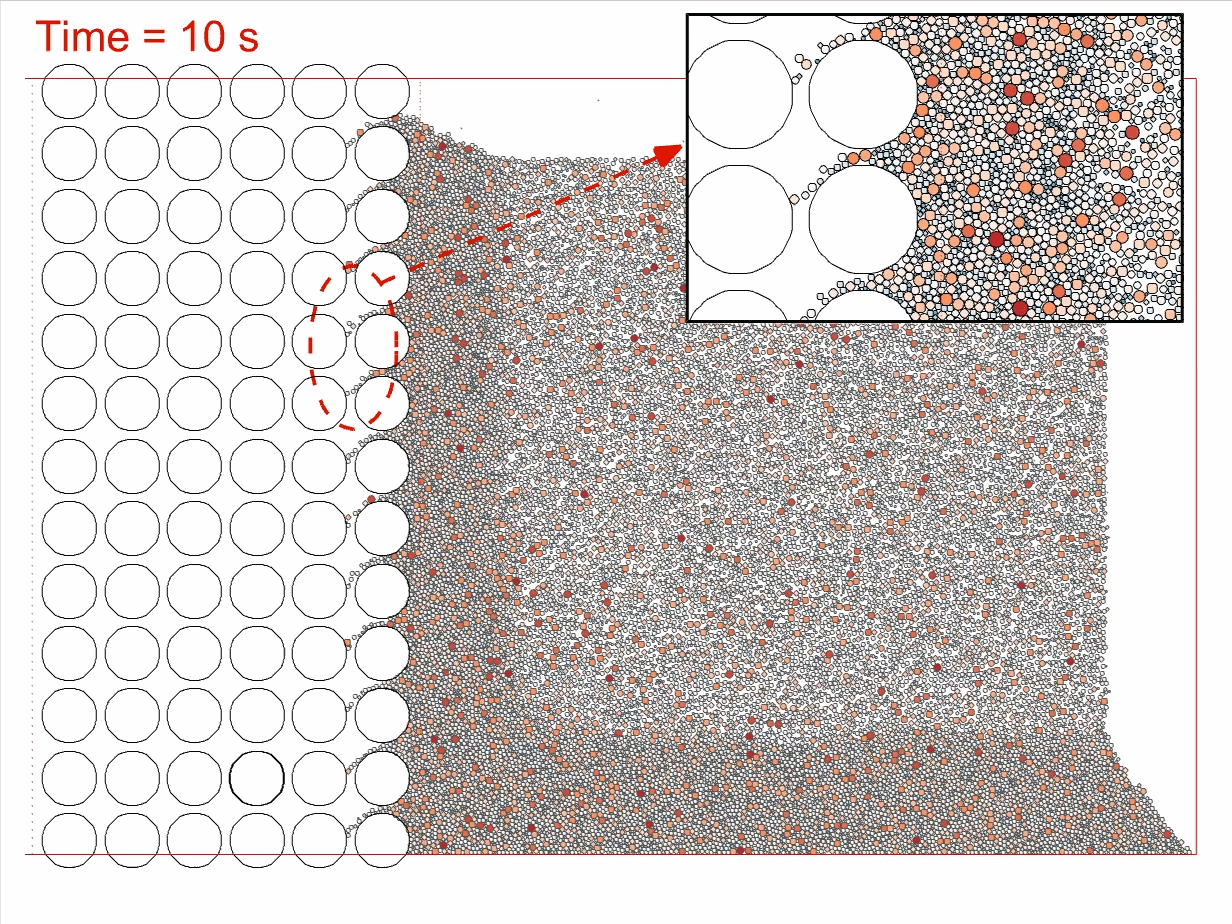
Particle transport in porous media is a critical research area with significant implications across fields like environmental science, petroleum engineering, and biotechnology.
In petroleum engineering, the transport of small particles in unconsolidated hydrate-bearing sediment (HBS) poses substantial challenges. To accurately simulate gas production from HBS, it's essential to consider the numerous coupled processes, including particle transport.
I independently developed a parallel particle transport code based on the discrete element method (DEM). The code functions as a stand-alone application with independent data inputs and can be seamlessly integrated with reservoir simulation software.
It captures processes such as sand detachment, collision, clogging, and migration during sand particle transport.
My work includes:
- Designing the code architecture, including modules, subroutines, and core functions
- Parallelizing the code using MPI to simulate systems involving millions of particles
Modeling of Subsurface Gas Flow
Gas flow through the subsurface is critical for geological processes like volcanism and subsurface engineering activities such as geothermal energy extraction, carbon sequestration, and underground hydrogen storage.
Gas migration in the subsurface involves complex multiphase fluid flow, phase change, pressure buildup, and gas fracturing, which could be catastrophic if uncontrolled.
I use TOUGH+RealGasBrine to simulate the underground hydrogen storage and carbon capture and storage (CCS).
My work includes:
- Analyzing the feasibility of hydrogen storage in aquifers and depleted gas reservoirs
- Evaluating the effects of cushion gas, relative permeability hysteresis, and formation type on hydrogen recovery efficiency
- Investigating the long-term implications of CO2 sequestration in saline formations
- Modeling cyclic injection for geologic H2 production
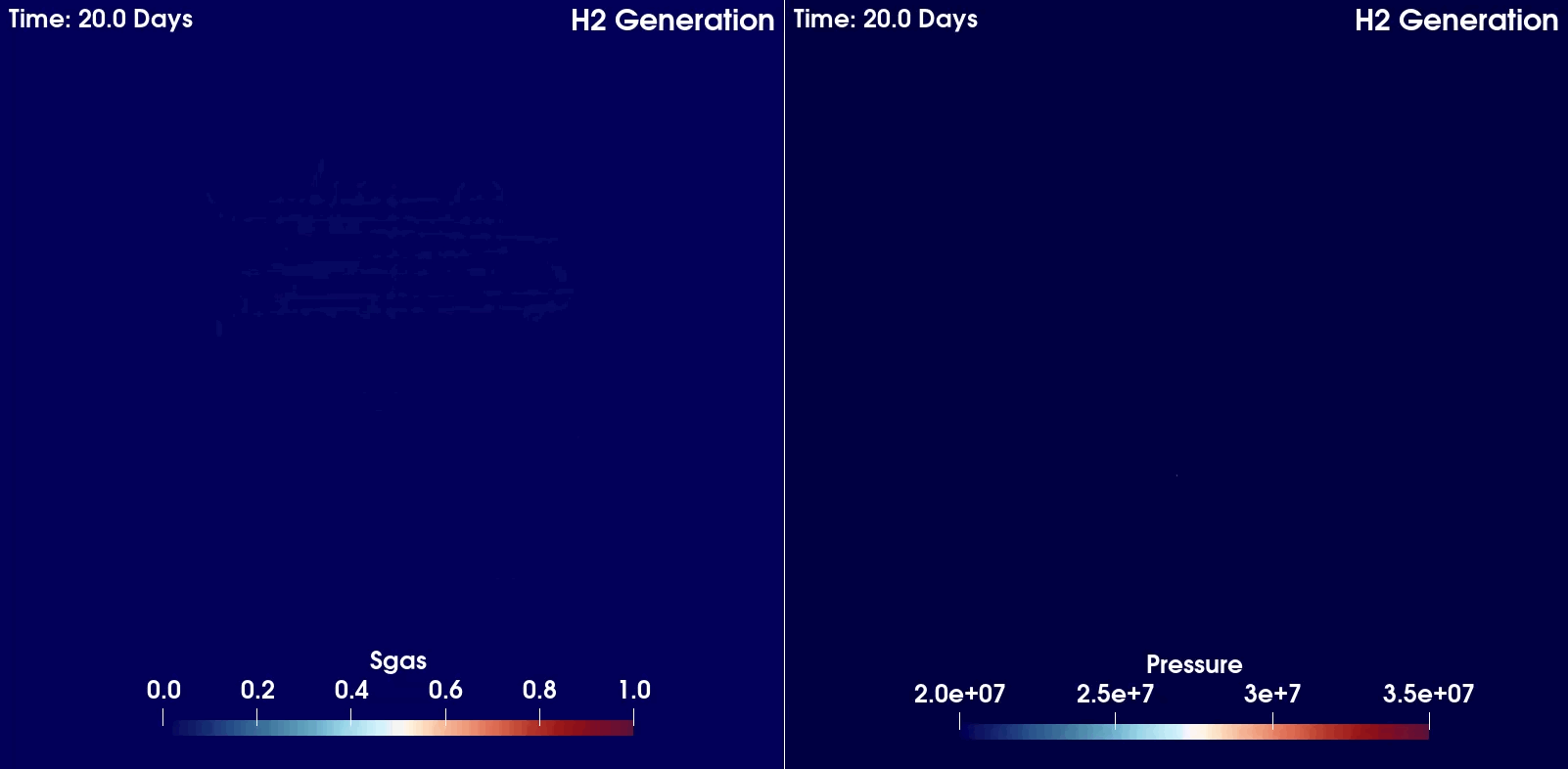
Nuclear Waste Disposal
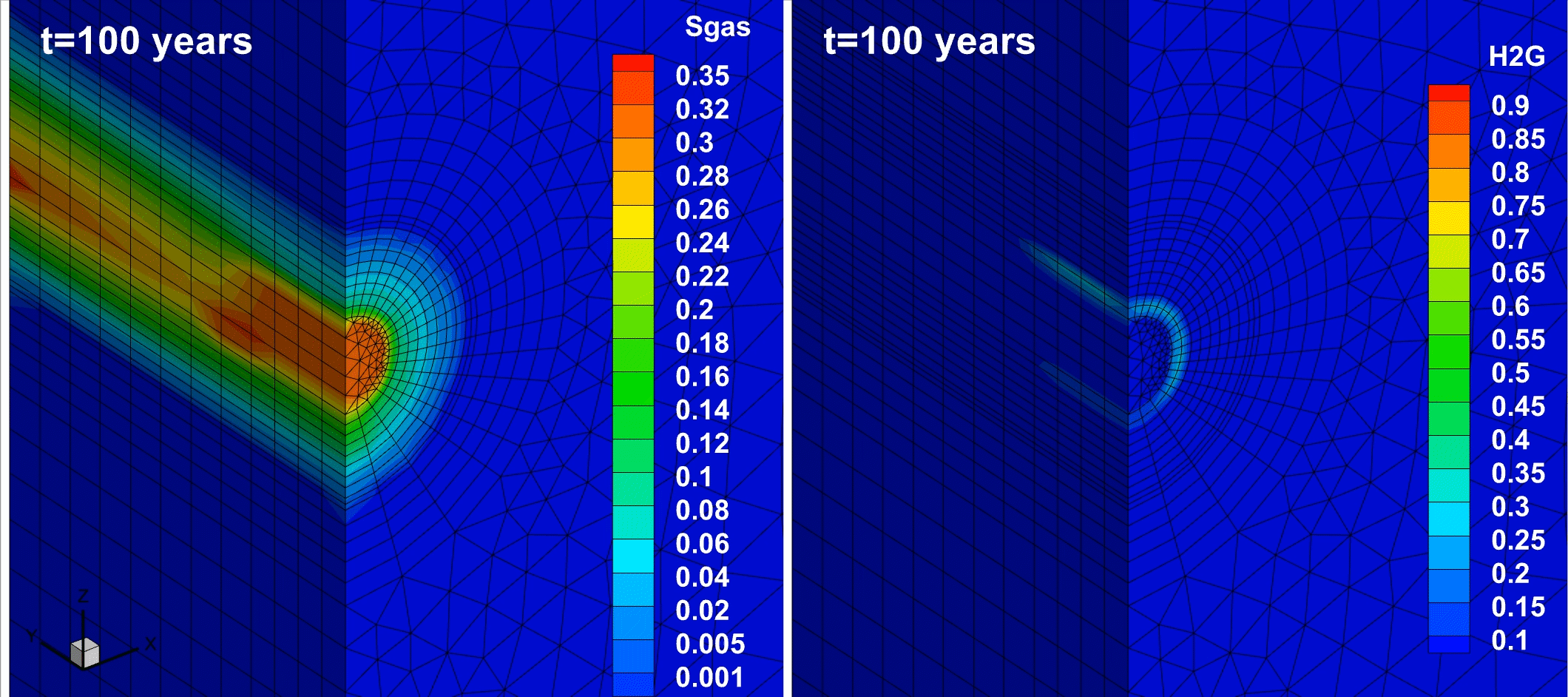
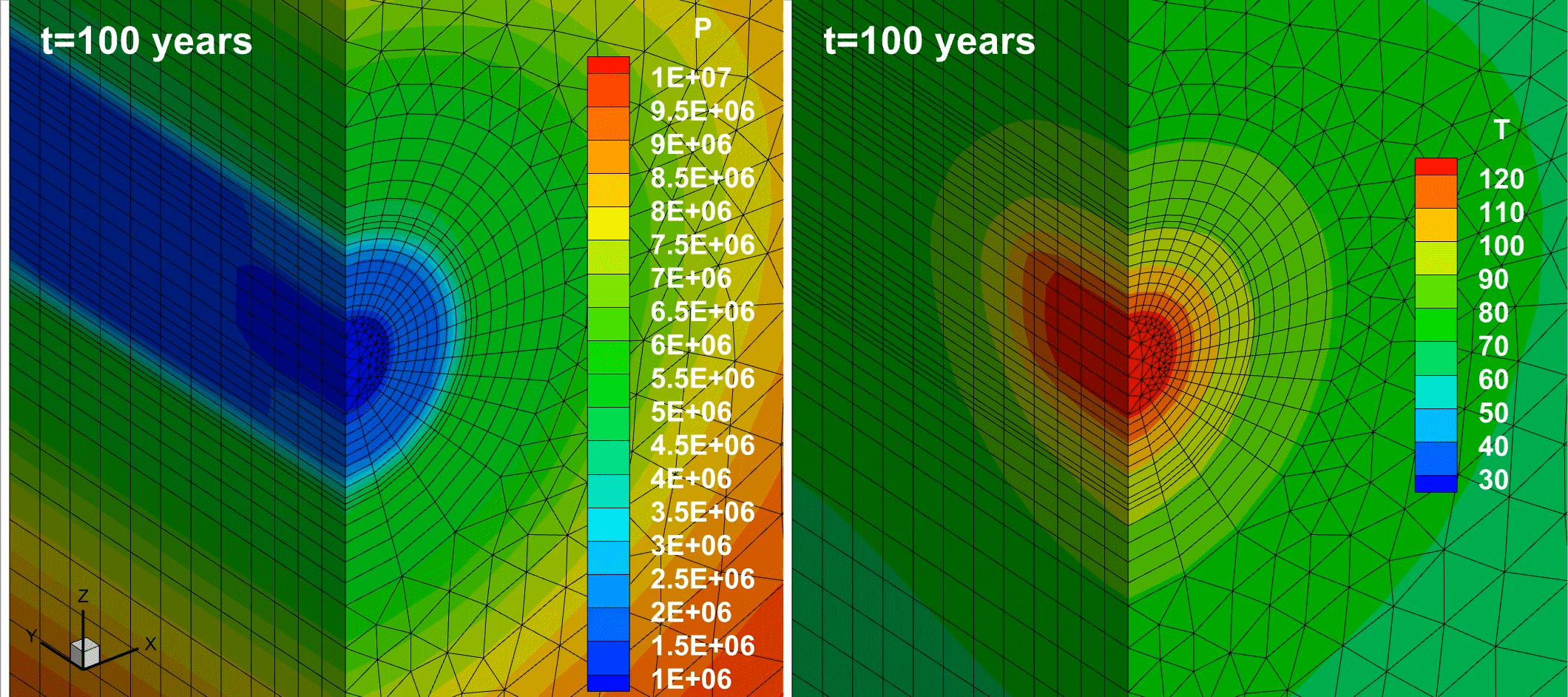
Research in geomechanics and underground engineering requires coupled thermal-hydraulic-mechanical-chemical (THMC) modeling. For example, the safe disposal of high-level nuclear waste necessitates robust geological repositories, and THMC numerical modeling helps study these systems over extended periods.
I use TOUGH+FLAC3D to investigate temperature, pressure, and stress responses in geological disposal of high-level radioactive waste over a 10,000-year period.
My work includes:
- Building a 3D THM-coupled model for predicting gas migration in geological nuclear waste disposal sites
- Evaluating the effects of heat and gas release from waste canisters on repository performance
Miscellaneous Research
In addition to my core research areas, I am also competent in the following fields:
My work includes:
- Mesh Construction
I use Gmsh to create specialized meshes, such as Discrete Fracture Network (DFN) meshes, for investigating the effects of fracture creation on geological hydrogen extraction. - Natural Gas Hydrate
During my Master's studies, I focused on natural gas hydrates and have expertise in TOUGH+Hydrate. I plan to investigate the feasibility of large-scale CO2 sequestration in hydrate-bearing sediments. - Machine Learning
While parallelization significantly accelerates particle transport simulations, the computational cost of DEM simulations remains high. Machine learning offers potential for reducing these costs, and my particle transport simulator can generate ample data for training ML models.
